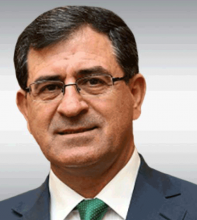You are here
Unveiling the Federal Reserve's next move
Jul 17,2023 - Last updated at Jul 17,2023
In the United States, inflation has eased for the twelfth consecutive month in June. It decreased to 3 per cent from 4 per cent in May, according to the latest consumer price index data from the US Department of Labour.
However, last month's inflation report was unusual, as it was the first time that a decrease in inflation was not followed by an interest rate hike by the Federal Reserve. Instead, for the first time in over a year, the central bank kept interest rates unchanged to assess the cumulative impact of the 0.5 per cent rate hikes since March on the economy.
While consumer price inflation has calmed, the Federal Reserve's preferred inflation gauge, the Personal Consumption Expenditures index, indicates that inflation remains below its target of 2 per cent, which defines price stability as central banks declare in their monetary policies.
Therefore, ahead of its upcoming meeting scheduled for July 25-26, the Federal Reserve is trying to determine the number of additional interest rate hikes necessary to bring inflation closer to this target. Considering the progress made in June, could the answer be no rate hike?
Federal Reserve Chair Jerome Powell has repeatedly emphasised that data from a single month does not indicate a trend. The question at hand is, "Should central banks continue raising interest rates?"
In response to this question, the central bank governors of the four major central banks emphasised in a seminar held at the Central Bank Forum organised by the European Central Bank two weeks ago that central banks adopt a data-dependent approach in their interest rate decisions.
As the available data about the US market, which accounts for about a fifth of the global economy, suggests, there has been a slowdown in the labour market, a decline in commodity prices excluding food and energy, stability in prices of essential services, and strong evidence of a housing inflation slowdown on the horizon. These indicators lean towards no interest rate hike but certainly do not imply a rate cut.
However, there are many indications from Federal Reserves officials that a quarter-point interest rate hike is likely at the next meeting. The looming question is what the Federal Reserve should do for the rest of the year.
Some argue that the Federal Reserve should halt interest rate hikes due to a sharp slowdown in inflation in June, despite the central bank keeping rates unchanged that month.
From another perspective, if the Federal Reserve waits too long to raise interest rates and doesn't do so at its upcoming meeting, it risks its credibility, potentially leading to a resurgence of price levels that would make it difficult for the Federal Reserve to take tough actions against it, as happened in early 2022, as believed by many, including the author of this article. It is essential not to sacrifice what caused the significant decline in inflation in all its definitions, which are the substantial interest rate hikes by central banks.
The future moves of the Federal Reserve depend on indicators of inflation, employment, stress test results, overall economic stability, and inflation lies at the heart of those conflicting expectations. From this standpoint, it is likely that the Federal Reserve will raise the benchmark interest rate later this month by 25 basis points, to a range of 5.25 per cent-5.5 per cent.
The big question remains, "Will the global economy experience a recession in the coming months?" Previous experiences in the 1970s and 1980s have shown that the effects of monetary policy movements, such as interest rate hikes, are not immediate and can take several months or even years to spread throughout the economy, especially if monetary policy tightening is overly aggressive, as has been the case for about a year, or if other negative factors coincide, which could contribute to a recession.
What will happen is that central banks will closely monitor economic indicators and adjust monetary policy accordingly. If central banks see that the economy is significantly slowing down or if a recession is imminent, they may respond by reducing interest rates or implementing other measures to stimulate economic growth.













